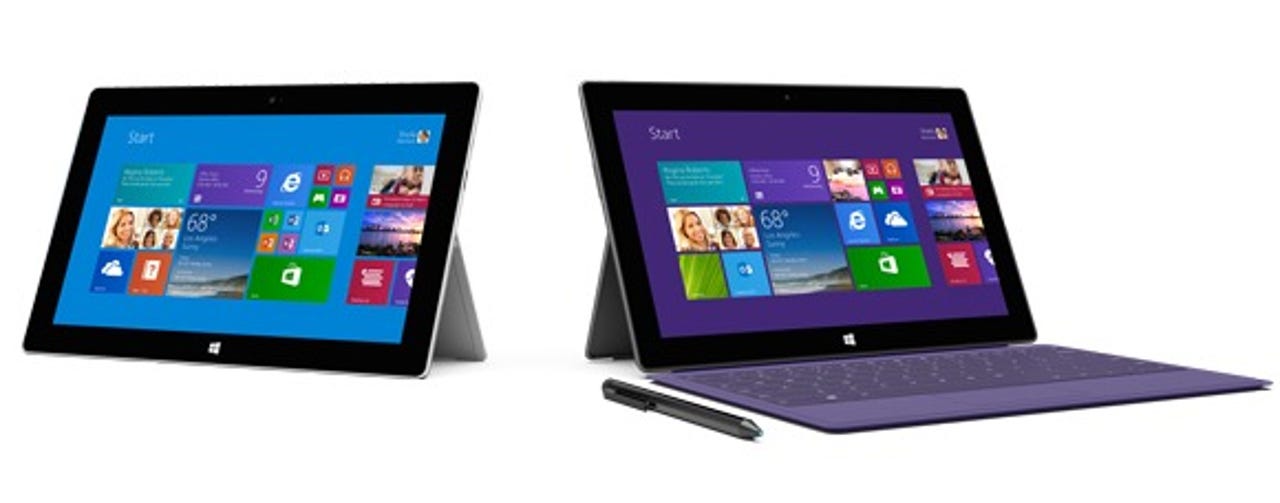Surface 2 -- why didn't Microsoft change anything?


So I'm a tad confused about Microsoft's Surface 2 announcement yesterday. Did Microsoft actually announce anything new?
I'm sure some of you will say that "yes they did!" then then point that we now have two new Surface devices like more processing horsepower and various other "yadda yadda" improvements. (The kickstand has two possible angles! Haswell!)
However, the problem with Surface is that the proposition is fundamentally broken and needed a complete reboot. That didn't happen.
RT and wrong
My complaints about Surface are mainly around Windows RT. The post-PC era is dependent on simplicity -- simple ideas that are accessible to everyone. Yet with Windows RT Microsoft has managed to build the most confusing proposition that it's possible to build.
Windows RT is a version of Windows that looks like Windows, yet you can't install your own Windows software on it. How is that helpful to anyone?
Windows RT needed to have been killed off. The proper way to go forward with a lightweight OS is to bring the Windows Phone OS onto larger devices in exactly the same way that Apple does with iOS and Google does with Android. This increasingly looks like something Microsoft wants to do, so why postpone the inevitable and roll out a new Windows RT-based device?
(I would guess a point of friction on this would be that no apps would properly support tablet screen sizes. At least the 100,000 Metro-style/Windows Store apps available for Windows 8 and Windows RT are designed for tablet form-factors. Plus with Microsoft buying Nokia, does it make more sense for such things to be Nokia devices, or Surface devices? I'm not sure.)
In the first wave, the Windows RT version of Surface was called "Surface RT", and the full version called "Surface Pro". Now in the second wave it's "Surface 2" and "Surface Pro 2". That's more confusing than it was before!
In fact, it's so confusing that in this piece I'll be using "Surface 2 (RT)" so that we don't get lost.
An unforgivable problem -- seeing as Microsoft has had a year to think about it -- is that Surface 2 (RT) is too big. With the original Surface devices it was understandable that Microsoft didn't see the preference in Consumerland for smaller tablets, especially as no one was really expecting the iPad mini to be popular, or that Google would manage to push Android over the hump so that smaller Android devices worked well.
Pro
I've fewer complaints about the Pro variant of Surface as this has always been a curious take on a laptop form-factor rather than a tablet per se. Microsoft seems now to be on-side with this approach and pushing the device more as a laptop than anything else, although they remain keen to keep touting the idea that Surface Pro is a "productivity tablet".
I dislike the term "productivity tablet" immensely. It's a confusing term that conflates PC-era thinking into the post-PC era. Post-PC is about our entire digital lives. Some of that "life" will contain the bit where you "work" and where you need to be productive. But creating a post-PC era device that is "productivity first" is totally backwards.
It's no surprise really that Pro variants make more sense than the RT variants. Microsoft's engineers and management understand the PC as an idea better than anyone else on the planet, so of course when they set out to make the best possible one they are likely to end up getting pretty close.
For me though the killer problem with the Pro variant is that I can't use it on my lap. Sure, blame it on "short legs and nerd guts" as a commenter on my piece lamenting Surface's poor lapability did earlier this year, but I'm not going to buy a laptop I can't use on my lap.
Conclusion
My problem is that I look around at both of these devices and think "what's changed?"
I was deeply disappointed by Surface RT last year. I was expecting something that would compete with the iPad, and instead I got something that was unfinished and poorly positioned.
As far as I can tell, the positioning hasn't changed one bit. The only thing that piqued my interest yesterday was the freebie Skype subscription. I can see how that would appeal to the Consumerland customer base, so I guess that does show some sensitivity to the market.
With the Windows 8.1 RT release, things are more polished. But we know that Microsoft had to do an enormous writedown because of poor Surface RT sales. With Surface 2 (RT), there are essentially no changes at all from the proposition last year. Of course, Microsoft can avoid another writedown meltdown simply by not making so many of them.
How about Surface Pro? This I suspect will continue to do OK. The Haswell processor offers important battery life improvements. You can now get more RAM with it. For those who fancy a laptop that's bit unusual and quasi-tablet-ish, you might find it work for you.
Mind you, if I wanted a full Windows tablet, I'd take my colleague James's advice and buy a ThinkPad Tablet 2.
What do you think? Post a comment, or talk to me on Twitter: @mbrit.
Image credit: Microsoft